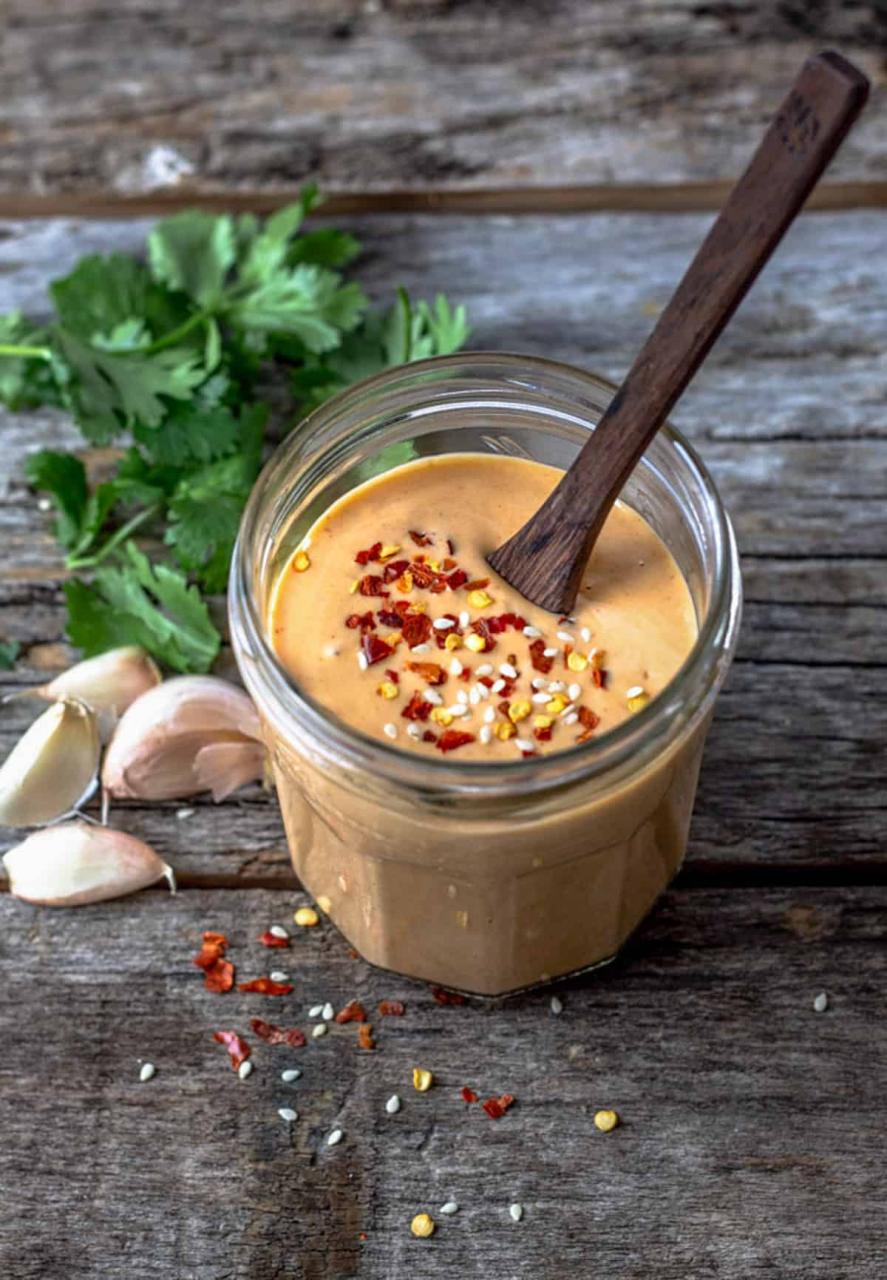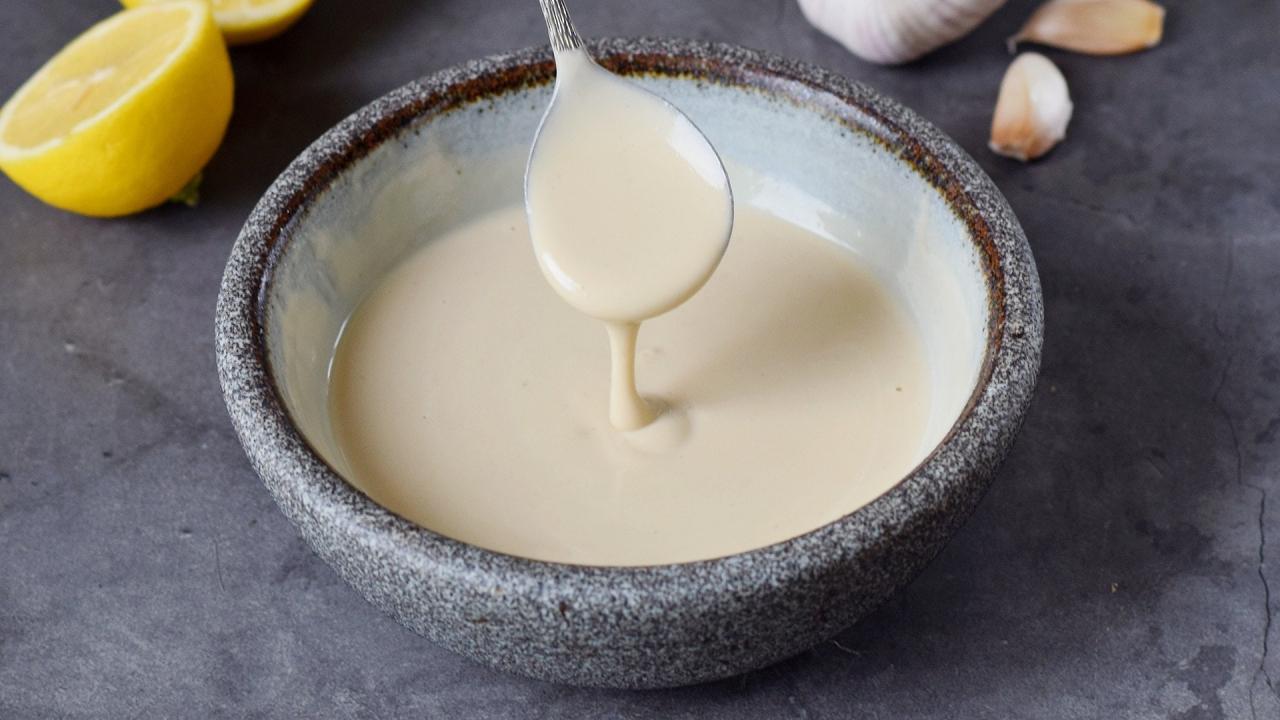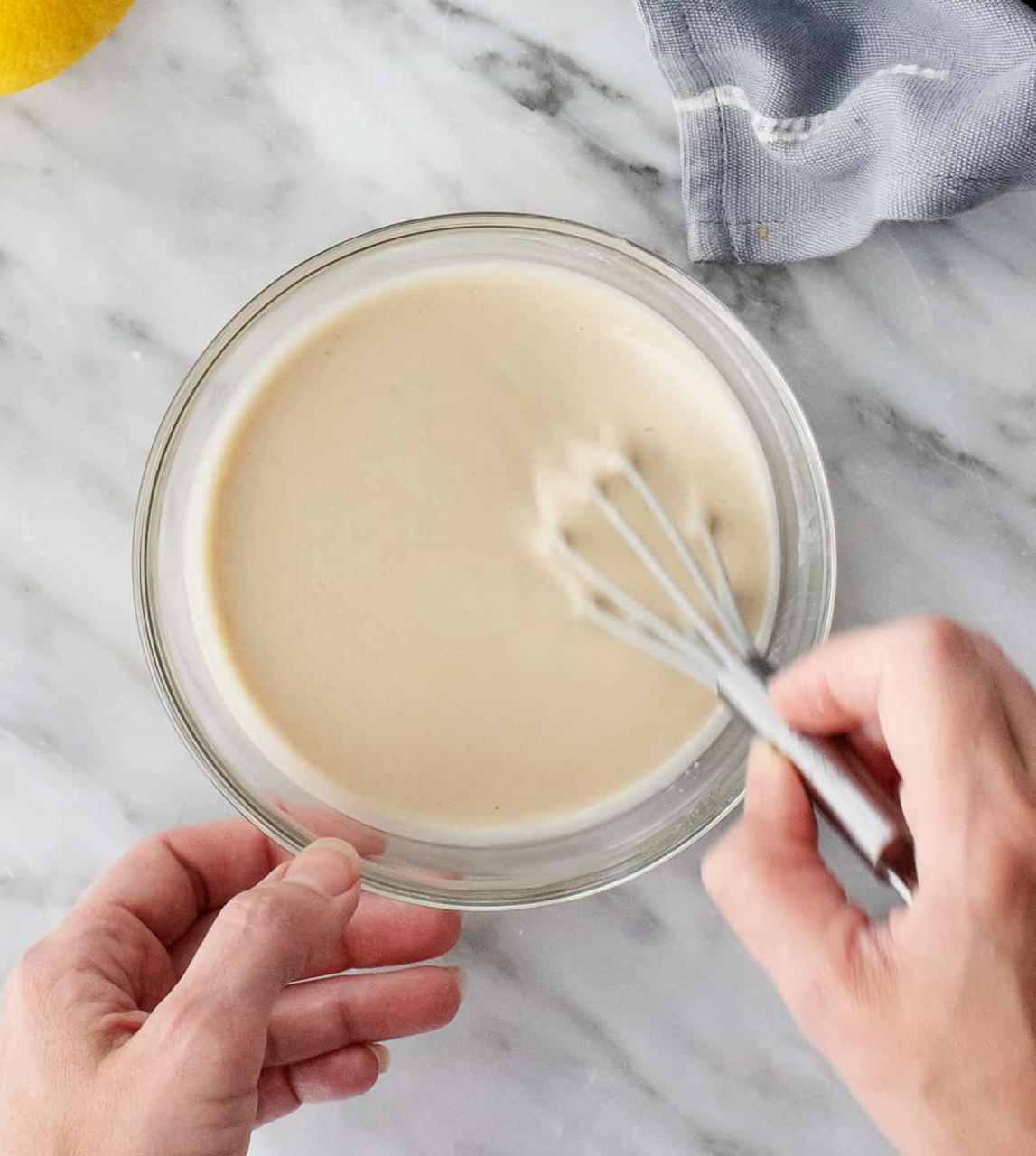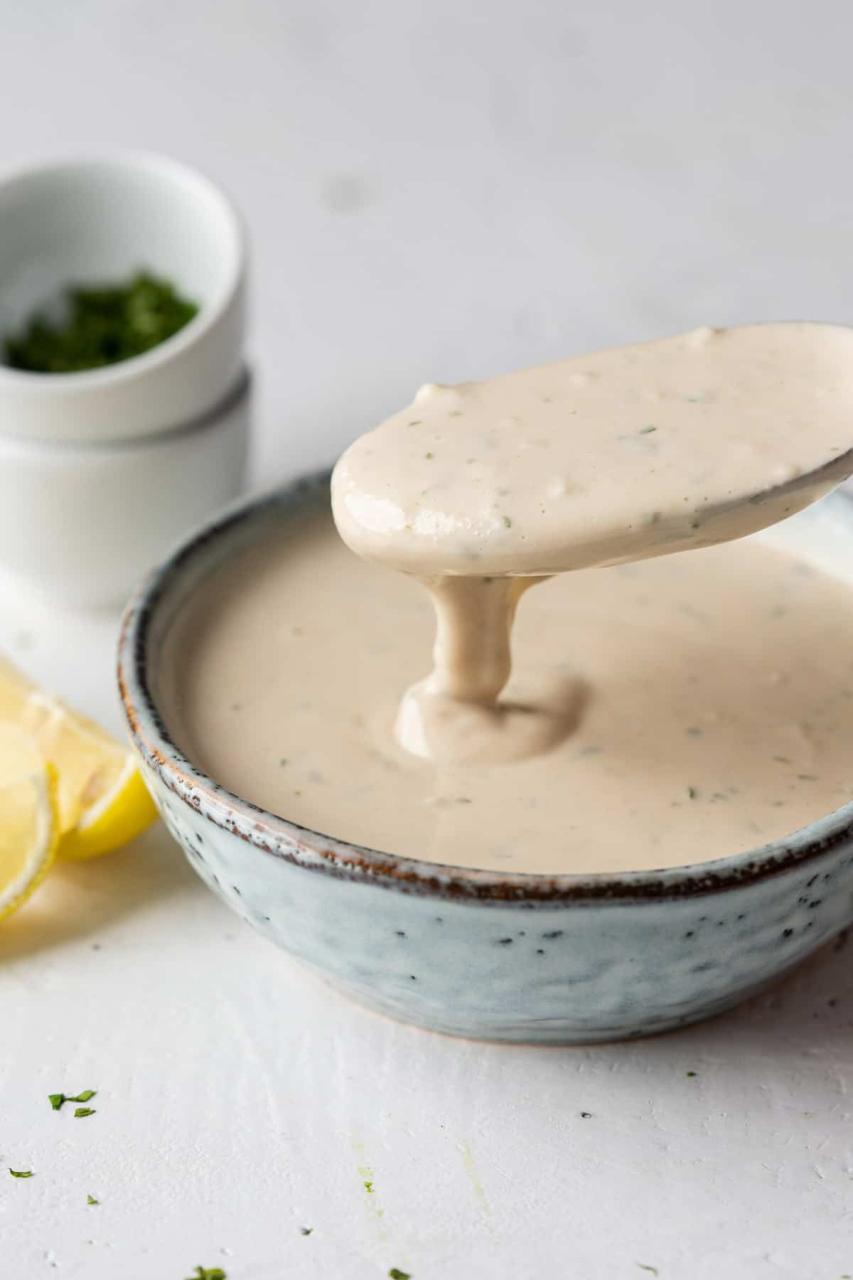Tahini is a paste made from ground sesame seeds, a staple ingredient across various culinary traditions, especially in Middle Eastern and Mediterranean cuisines. It is known for its creamy texture and nutty flavor, which makes it a versatile ingredient in both savory and sweet dishes. Vegan tahini sauce typically uses tahini as a base and complements it with ingredients that do not come from animals, making it suitable for vegan diets.
The process of making tahini involves the sesame seeds being toasted and then ground into a fine paste. When it comes to preparing a vegan tahini sauce, the pure tahini is usually mixed with elements such as lemon juice, garlic, and water to achieve a desired consistency. For additional flavor, extra ingredients like fresh herbs, spices, or alternative sweeteners (such as maple syrup) can be added.
This sauce is characteristically rich in nutrients, featuring healthy fats, proteins, and various vitamins and minerals primarily from the sesame seeds. Its health benefits are appreciated in vegan cuisine, not only for the nutritional profile but also for the way it enhances the taste profile of plant-based dishes.
Vegan tahini sauce is commonly used as a salad dressing, a drizzling sauce for roasted vegetables, a dip for raw veggies or pita bread, or as a creamy base for sandwich spreads. Its creamy consistency and heartiness make it an excellent substitution for dairy-based sauces and dressings in vegan cuisine. It can also be customized with different levels of tanginess, garlic flavor, or sweetness to fit any specific palate or dish requirement.
Vegan Tahini Sauce Recipe


Vegan Tahini Sauce
Equipment
- 1 mixing bowl
- 1 air tight container
Ingredients
- 1/3 cup tahini
- 1 tsp maple syrup
- 1/3 cup fresh lemon juice
- 1 tbsp olive oil
- 1/2 tsp kosher salt
- 2 tbsp water
Instructions
- Combine the maple syrup, tahini, oil, lemon juice, and salt in a small mixing bowl and whisk until well mixed.
- Add the water and whisk until smooth creamy. Taste and make adjustment as needed, add more water or salt to suit your taste if needed.
- Serve immediately or store in an air tight container and keep in the fridge, use within 2 week, bring to room temperature before serving
Cooking Tips about Vegan Tahini Sauce

- Quality Tahini: Start with high-quality tahini. The taste of your sauce heavily depends on the quality of the tahini paste you use. Look for tahini that is creamy and smooth, not dry or overly separated.
- Consistency Adjustments: Tahini can be thick, so to achieve the desired consistency for your sauce, gradually add water or lemon juice until it becomes smooth and reaches your preference—whether that’s a drizzle for salads or thicker for dipping.
- Balancing Flavors: Lemon juice not only adds to the consistency but also provides necessary acidity to balance the nuttiness of the tahini. Adding minced garlic will contribute a pungent depth, but start with a small amount and taste as you go—garlic can quickly overpower the sauce.
- Seasoning: Don’t forget to season your tahini sauce with salt. You may also want to add a sweetener like maple syrup or agave to counteract the bitterness that tahini can sometimes have.
- Adding Herbs and Spices: Fresh herbs like parsley or dill can add a bright note to the sauce. Dry spices like cumin, paprika, or coriander are also excellent additions that can complement the natural flavor of tahini.
- Storing: Vegan tahini sauce tends to thicken when refrigerated. If this happens, simply whisk or stir in a little bit of water or lemon juice when you’re ready to use it again.
- Use Immediately or Let Sit: Some prefer to use tahini sauce immediately, while others find that letting it sit for a few hours or overnight allows the flavors to meld and the garlic to mellow out, resulting in a more harmonious taste profile.
- Dressing vs. Dip: Consider what you’ll be using the tahini sauce for. As a dressing, you might want a thinner consistency; as a dip, keep it thicker. Adjust the amount of liquid accordingly.
- Extra Creaminess: For a richer, creamier texture, you could blend in some silken tofu with the tahini—this is a great option for those looking for lower-fat alternatives to oil-based dressings.
Serving suggestions about Vegan Tahini Sauce

- As a dressing: Drizzle it over fresh salads or grain bowls. The creamy texture and savory flavor pairs well with leafy greens, cucumbers, and other salad vegetables. It’s especially delightful in salads that feature ingredients like chickpeas, roasted vegetables, or quinoa.
- As a dip: Serve it as a dip for raw vegetables such as carrots, celery sticks, or bell pepper. It can also be a creamy accompaniment to falafel, dolmas (stuffed grape leaves), or any finger food that could use a rich, nutty component.
- With wraps and sandwiches: Spread tahini sauce within wraps or sandwiches as a dairy-free alternative to mayonnaise or other creamy dressings. It works well in both Mediterranean-inspired wraps and more traditional vegetable-loaded sandwiches.
- As a sauce for hot dishes: Tahini sauce can be drizzled over cooked dishes such as stir-fry, roasted vegetables, or even incorporated into pasta. Its creaminess can add a satisfying richness that softens the edges of spicy or intensely flavored dishes.
- Alongside grains: A spoonful of tahini sauce can elevate simple rice or other grain dishes. It’s particularly complementary to Middle Eastern or North African dishes where sesame is a congruent flavor.
- In noodle dishes: It can be mixed into cold noodle salads or poured over warm noodles with some sesame seeds and chopped herbs, creating an Asian-inspired dish with a nutty, creamy twist.
Top 4 FAQs about Vegan Tahini Sauce

- What are the basic ingredients in vegan tahini sauce? Vegan tahini sauce is typically made from a blend of tahini paste, water or lemon juice to achieve the desired consistency, crushed garlic for flavor, and salt. Variations may include added ingredients like olive oil, various herbs, spices like cumin or paprika, or sweeteners like maple syrup or agave nectar.
- How do you make vegan tahini sauce? To prepare vegan tahini sauce, you typically start with tahini paste as the base. You then gradually mix in water or lemon juice until the sauce reaches your preferred consistency. Minced garlic, salt, and any additional flavorings are added to taste. The sauce can be whipped together by hand with a whisk or using a blender for a smoother texture.
- How can I use vegan tahini sauce in recipes? Vegan tahini sauce is quite versatile. It can be drizzled over roasted vegetables, mixed into salad dressings, spread on sandwiches or wraps, used as a dip for raw veggies or pita bread, and added to grain bowls or falafel. It’s also commonly served alongside dishes like stuffed grape leaves or as an essential component of hummus.
- What is the nutritional value of vegan tahini sauce? Tahini is rich in healthy fats, vitamins, and minerals, particularly calcium and magnesium. It also contains some protein. However, because tahini is calorie-dense, the nutritional value of the sauce will depend on the proportions of the other ingredients used. When consumed in moderation, it can be a healthy addition to a balanced diet, especially for vegans who might rely on sesame seeds as a source of calcium.
Vegan tahini sauce stands out as a luscious and adaptable addition to the vegan culinary palette. Its smooth, nutty base lends itself to countless variations, complementing dishes ranging from salads to sandwiches, and its nutritional profile—rich in minerals and healthy fats—is as enticing as its flavor. The joy of this condiment lies in its versatility; it’s easily customized through simple tweaks to consistency and seasoning, catering to diverse taste preferences and dietary requirements.
While inherently rooted in traditional Middle Eastern fare, its growing popularity across different cuisines reflects a wider appreciation for vegan options that don’t compromise on taste or texture. Whether used as a drizzle, dip, or dressing, vegan tahini sauce is an embodiment of how plant-based alternatives can achieve gastronomic delight while honoring ethical and health-conscious choices.
As with any ongoing culinary narrative, the story of vegan tahini sauce will continue to evolve, potentially influenced by emerging trends, ingredients, or inventive recipes introduced after early 2023. To keep abreast of the latest developments and enhance your tahini repertoire, seeking out contemporary sources or culinary inspirations would be recommended.
Leave a Reply